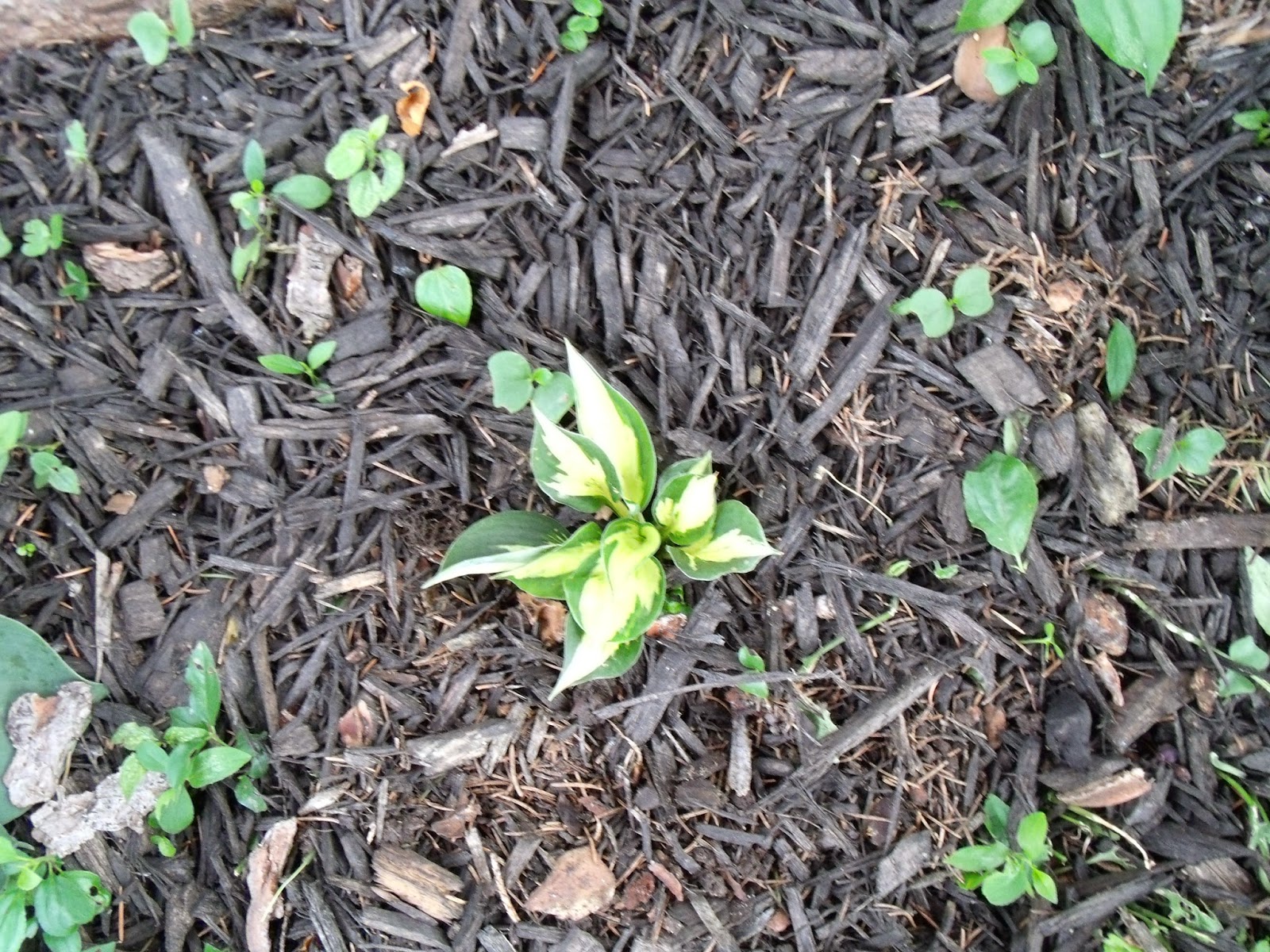The key to a successful divide is a sharp utility knife and a bucket of water. First remove the hosta plant from the pot. Remove as much soil or potting medium as possible without harming the roots. Next swish the plant roots in a bucket of water to remove the remaining material. You can use your hand to move the roots around to aid in the removal.
This part is important. Take your time and inspect the plant to see how many divisions you can get. I use a disposal utility knife because it is sharp and long. Place the knife between the individual plants and slowly cut downward. Gently pull the plant apart taking your time to undo the roots from each other.
Dividing the Paul Revere hosta.

This plant was planted in ground up coconut shells and it easily washes off the roots. The root mass was mostly the thick roots and very few fine roots.
Using the sharp utility knife with the adjustable blade extended , I made my cut between the two plants. I never realized how difficult it was to cut and take a photo at the same time. Luckily it was only the plant that was divided.This resulted in two plants. The plant on the right has a very small plant attached to the larger plant but I felt that the original plant was already on the small side to I left it attached. It is very important to put the plants immediately in water after cutting so that the hair roots do not dry out.
Here is the Paul Revere hosta planted in the bed. This bed has mulch in it and usually mulch is discouraged as it attracts slugs that can eat holes in your hostas. But this is my driest bed and slugs have never been a problem.
Next is the Maui Buttercups plant. This plant was planted in potting soil and it was impossible to get all the soil off the roots because of the size of the root ball. It is only necessary to rinse enough potting medium off to give you a good look at the plant so you can plan your cutting.
The first cut yielded two plants.But I felt that the plant was large enough to divide again. This gave me 4 very healthy plants for a cost of $17.99.
Maui Buttercups grows to a height of 8 to 12 inches so it will stay low between these two larger and taller hostas. By next year this plant will increase and have three divisions and the following year between 6 and 9 divisions. It is best to wait at least three years before dividing again. I love the contrast between the blue and yellow. The plant on the left is Red October and the stems or petioles are red.
Always water thoroughly every day for the next week or so. I also add a small amount of water soluble fertilizer to help it along. It is essential that you do not let the plant dry out during this first year.
I always try and do my cutting on a cloudy day or at least in the shade where it is cooler and later in the day so that it is past the heat of the day. It rained about two hours after I planted the newly divided hostas so that was a blessing. They say that Native Americans planted during a full moon. The full moon shone enough light for planting and the plants or seeds didn't dry out from the sun. We always try and plant our trees just before the sun sets so that they are not stressed out by the heat and can absorb water and stabilize before the sun rises the next day.
Dividing plants is a cost effective method for having a hosta bed filled with uncommon hostas at a reasonable price. The plants may be small but they multiple fast and by the second year you will have completely forgotten how small they were the year before. By year three the hostas will just begin to touch one another and by year 5 the bed will be mature and looking fabulous.
Today's cost
2 X $17.99=$35.98 for 2 plants
After dividing
$35.98/6 plants=$6.00 a plant








That's good information. I've just been dividing mine blindly with a sharp spade. I like the idea of rinsing the roots first so that you can see them better.
ReplyDeleteAlways so helpful! I have never divided my hostas and we've been here for 9 years. I guess it will be time to do so.
ReplyDeleteUsing a sharp shovel is an acceptable method on large hostas. But I feel with the uncommon and more expensive hostas it is worth the time and effort to use a knife.When using a shovel you damage some of the divisions and this can lead to rot. Of course dividing your hostas in the fall is probably the preferred method both for aesthetics and less stress as the plant is soon to be dormant.
ReplyDelete